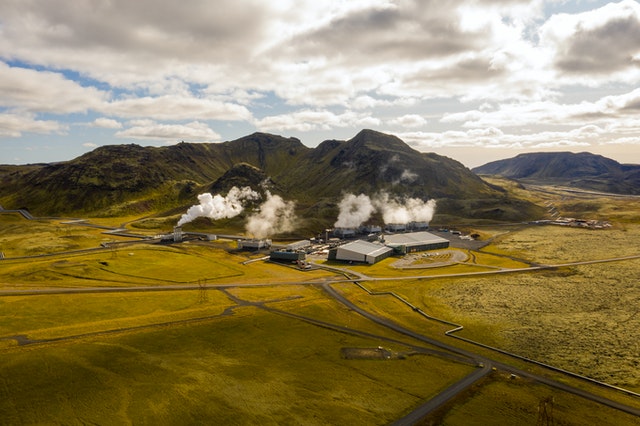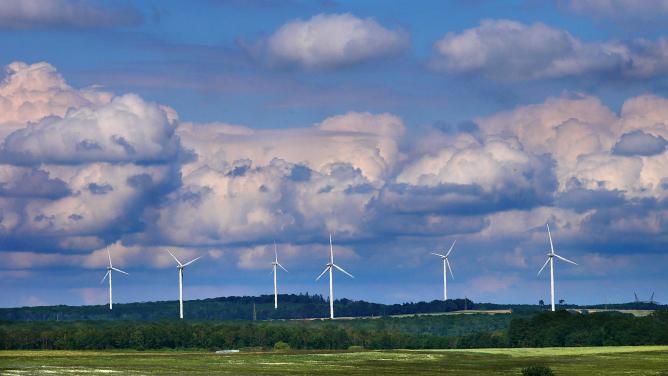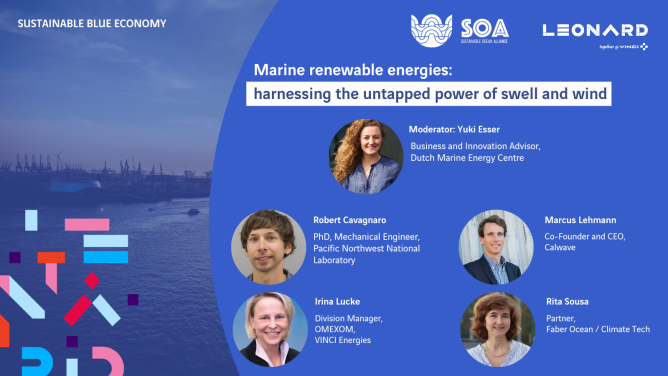“The Forgotten Renewable”. This nickname often given to geothermal energy illustrates the sector’s low level of development compared to its potential. Its potential being various technologies that can produce heat, cold or electricity from calories captured at different levels underground. According to MIT, geothermal energy could theoretically meet total global energy demand twice over. It also has the considerable advantage of being controllable and non- intermittent. However, it currently represents a small percentage of the world’s energy mix with 0.3% of electricity generation worldwide. With annual growth of around 2%, the sector is nowhere near the 13% needed to stay within IAE’s Net Zero Emissions by 2050 targets.
How does it work?
While there are numerous technologies out there, there are two main types of geothermal energy, mainly linked to extraction depth. Deep geothermal energy can venture deeper than 2,000m for temperatures above 150°C. Shallow geothermal energy is generally located less than 200m deep for temperatures of less than 30 degrees. Exploitable over more than 90% of the country in France, the latter undoubtedly has the greatest potential despite currently only providing 3% of renewable heat.
It’s all in the ground
Deep geothermal energy technology remains very expensive when it isn’t implemented in favourable volcanic areas (such as Iceland, where it accounts for 90% of heating and 27% of electricity). To overcome this, the start-up Quaise has teamed up with MIT to develop a microwave drilling system capable of harnessing established infrastructure of the oil and gas industry. With $24 million in funding, the start-up is looking to build a pilot plant in the United States by 2024. So that’s another step towards the energy transition.
Shallow geothermal energy is particularly suitable for heating homes, but remains complicated to implement in limited spaces. GEOFIT is a European project made up of 24 different partners which tries to overcome this obstacle. Five pilot demonstration sites located in various European climates are being used to standardise efficient and proven technical solutions.
Lithium: geothermal energy’s best friend?
“One idea for improving profitability is to extract existing co-products in geothermal water, such as lithium, which could be used in various sectors such as the automotive industry,” explains Robin Apolit, head of geothermal energy at BPI France’s French Renewable Energy Trade Association. In the UK, a record 250 milligrams of lithium per litre of geothermal fluid has been detected at the United Downs geothermal power plant. This possibility of a dual business model is particularly promising.
Cities: a hot lead in combatting the climate emergency
Geothermal energy is particularly effective in urban heating networks when it comes to sharing and decarbonising heating and air conditioning. The technique dates back: the town of Chaudes-Aigues in the Cantal department was already using geothermal principles to heat its homes in the Middle Ages. In France, the Val de Marne department has the highest density of geothermal power plants in the world, for around a third of heat production. In Europe, the Decarb City Pipes 2050 network sees seven cities (Bilbao, Bratislava, Dublin, Munich, Rotterdam, Vienna and Winterthur) join together in creating a decarbonisation roadmap. The project partners believe geothermal energy could represent between one and two thirds of the energy produced in the future.
Roads are also another good potential source. The Dromotherm project aims to enhance the energy potential of roads by storing the heat recovered by the roads in the ground, before releasing it during the winter period. The project, which could also help reduce the intensity of urban heat islands, is based on the principles of shallow geothermal energy.
Timid public policy
While the output from geothermal energy is excellent, the initial investment is significant. It costs between $3,000 and $6,000 per kilowatt, compared to $1,700 and $2,100 per kilowatt for wind and solar. With this in mind, public investment is essential.
- In France, the geothermal risk guarantee fund has been created to cover the risk linked to exploration and exploitation of deep geothermal drilling.
- In the United States, Congress has allocated $85 million to promote geothermal R&D. The funding is a positive step, however it’s only a small fraction of the Department of Energy’s $62 billion overall allocation in the infrastructure bill.
- The World Bank is financing a significant number of geothermal energy projects, particularly in countries with strong geothermal potential. Indonesia, Turkey, Ethiopia, Djibouti and Armenia received $610 million in financing.
- Indonesia is one of the most geologically active countries in the world and sits on the largest geothermal energy reserves on the planet. However, the archipelago is struggling to attract investors, despite efforts to mitigate risk and provide economic incentives.
Geothermal in action
Hellisheiði is Iceland’s largest and newest geothermal power plant. Located on the active Hengill volcano, it provides half of the heat intended for the Icelandic capital. It is also home to an exhibition on the potential of geothermal energy. The plant is also famous for housing the largest carbon-capture facility in the world, making it a particularly virtuous infrastructure.

Industry gems capturing the private sector’s attention
Enerdrape was awarded with the Mobility and Urban Sustainability prize at the Hello Tomorrow Summit 2022, sponsored by Leonard. The start-up takes new and existing underground infrastructure (such as car parks) and installs geothermal devices.
The American start-up Fervo has teamed up with Google to optimise its drilling techniques using artificial intelligence solutions and a data driven approach. Ultimately, the aim behind this partnership is to provide data centres with a reliable and renewable source of energy. A pilot project is currently under development in Nevada.
BP and Chevron recently invested $40 million in newcomers Eavor. Thanks to its networks of wells which work like a gigantic underground radiator, the company is not reliant on highly permeable aquifers and does not need to resort to fracking-type drilling.
Dandelion is a start-up dedicated to geothermal heating which has raised $30 million thanks to the Breakthrough Energy Ventures fund. The sum is intended to increase market shares and therefore economies of scale for the relatively untapped geothermal energy sector.
The future of renewable energy?
Deep drilling and high initial outlay have long hampered the development of geothermal energy. However, the climate emergency, emission reduction targets and the need to find domestic sustainable energy sources make it an ideal candidate for the development of renewable heat and electricity. A US government study estimates that geothermal electric power generation could increase 26-fold by 2050.
This article was published as part of the Leonard newsletter. Subscribe to receive future ones by following this link.


